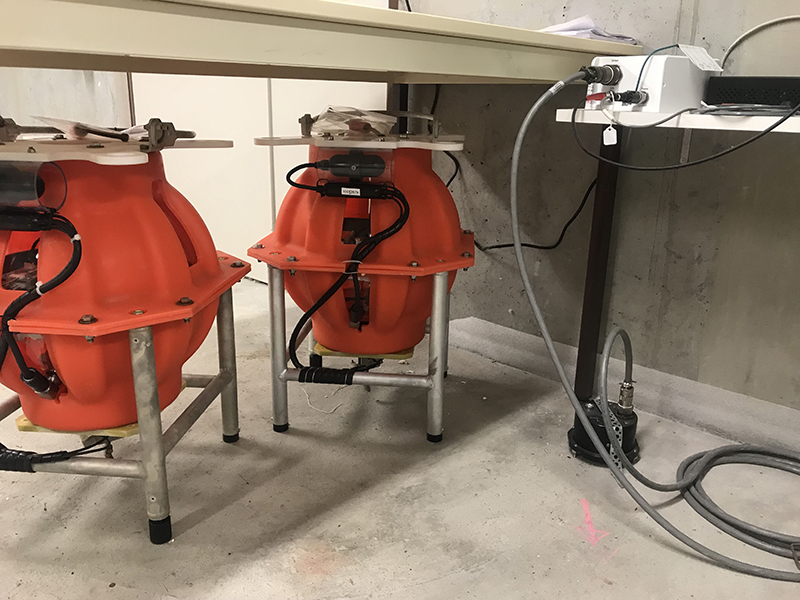The Mobile Marine Seismology (MMS) component is being set up, it will manage the new national community instrumentation park (link to the new RESIF-Marine website). Its objective is to allow the collection of seismological data at sea. This park brings together three major marine seismology centers: Paris (IPGP/INSU), Nice (Géoazur/OCA/IRD) and Brest (Geo-Ocean/UBO/IFREMER).
 New instruments are financed by the PIA3/EQUIPEX MARMOR project (Marine Advanced geophysical Research equipment and Mayotte multidisciplinary Observatory for research and Response), in particular
New instruments are financed by the PIA3/EQUIPEX MARMOR project (Marine Advanced geophysical Research equipment and Mayotte multidisciplinary Observatory for research and Response), in particular
- a new fleet of light OBS for rapid response after major events, to be implemented by Geo-Ocean ;
- a new fleet of light OBS dedicated to active seismic, to be implemented by Geoazur.
A national consultation was organized during the Marine Seismology Days (6-7/12/2021) to establish the technical specifications for the new OBS. A discussion had emerged on this occasion around the advantages of the new MEMs sensors (MicroElectroMechanical Systems accelerometer with wider bandwidth than a 4.5 Hz velocimeter) and the observation was made of a lack of comparative studies. In order to better define the characteristics of future OBS and to test the potential of MEMs technology, a working group was formed. It deployed during the HIPER campaign (March/April 2022) OBS equipped with MEMs and 4.5 Hz geophones at the same point at different depths and is currently conducting tests on land. Thus, two pairs of micrOBS (IFREMER/Sercel development), one equipped with a classical 4.5 Hz geophone and the other with a MEMs sensor have been installed next to the RAP station near Brest (UBBR) and next to the RLBP station near Camaret sur Mer (CAMF). The objective of this test is to compare the frequency content of environmental noise recordings, but also the dynamics of the sensors during earthquakes.
Contact : Sara Bazin
Contributors: Mikaël Evain, Pascal Pelleau, Sara Bazin, and Louis Géli (Geo-Ocean), Davide Oregioni, David Ambrois and Audrey Galve (Géoazur), Damien Fligiel and Mickaël Bonnin for the RLBP CAMF station operated by OSUNA
To know more
Two micrOBS, one equipped with a classical 4.5 HZ geophone and the other with a MEMs sensor, under test next to the RAP UBBR station in the IUEM premises in Plouzané © Sara Bazin.
The RLBP CAMF station is installed in the 638 blockhouse (red star) at Pen-Hir Point © Google Images @2022 CNES / Airbus.



